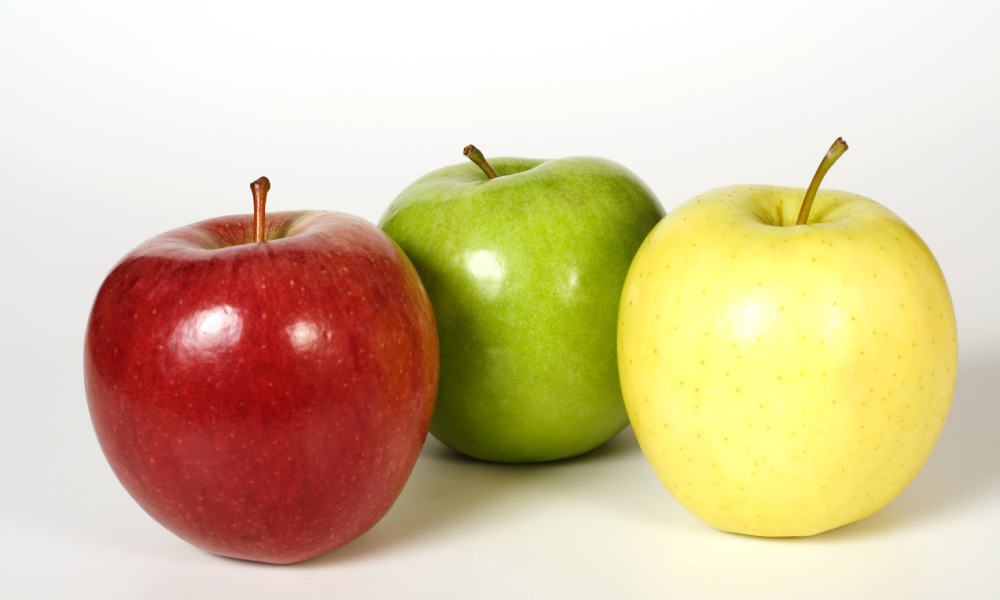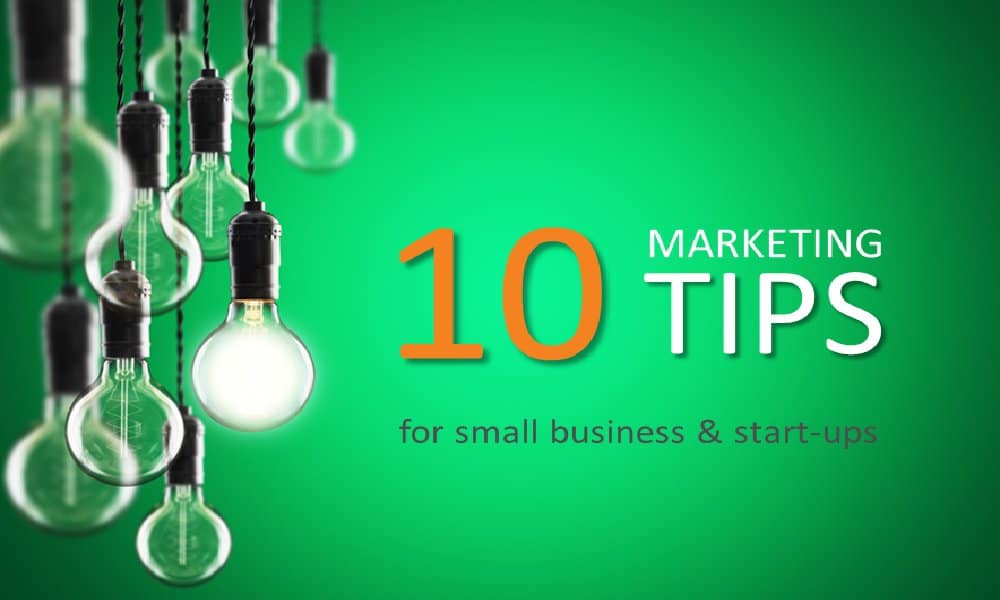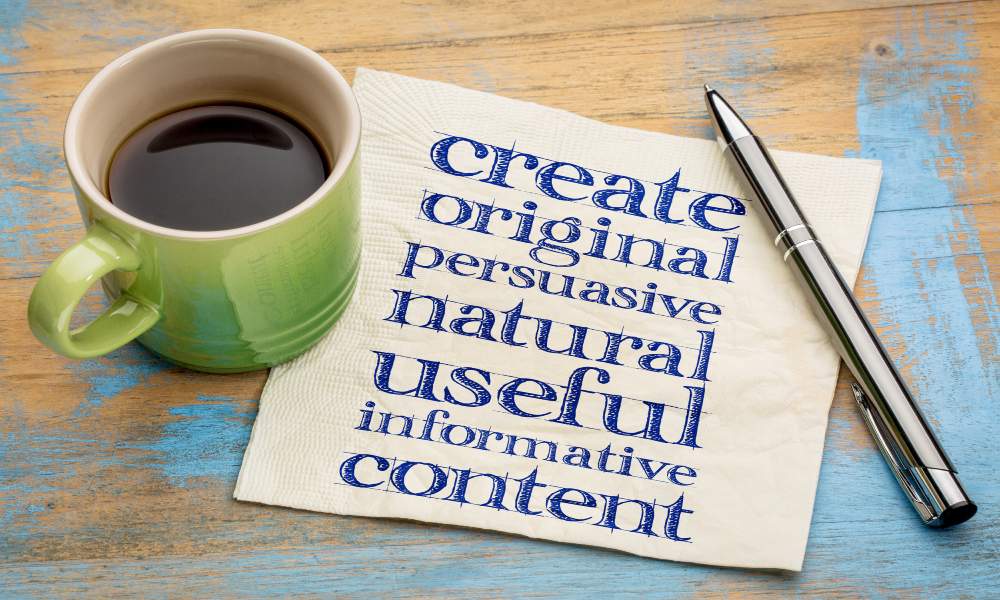If you don’t have a marketing background, you may well be a little hazy about content marketing vs SEO vs PR (public relations).
You probably have an idea what each of these means, but explaining how they’re different might be challenging. That’s hardly surprising as there is a fair amount of overlap in what you actually do for each of these. Now’s the time to get things straight!
For each marketing discipline, let’s look at the purpose, where the action happens, and what the action looks like.
Content Marketing
The purpose of content marketing is to build a relationship with potential customers by providing content (surprise!) which entertains, educates and inspires them. The more your prospects interact with your business and your content, the more they know, like and trust you. And the more likely they are to buy from you.
Content marketing covers the entire buyer journey.
- Awareness: Some potential clients may not have heard of your company. They may not even know that your product or service exists to help solve their problem or achieve their goal.
- Interest: Once they find out about you, draw them in by sharing something fun or useful.
- Research: At some point, they start seriously considering options to help with the challenge they face. They ask more questions and dig deeper. How much does it cost? Who else uses it and what do they say? Does it include this specific service or item? Do I get training?
- Discussion and decision to purchase. Content at this stage includes proposals and quotations, which are often highly personalised.
Of course the amount of content you need at each stage depends on your offering and how people or businesses buy from you. There is usually more content (both number of pieces and variety) in the early stages of the journey, to attract a wide range of potential clients.
Online and offline content marketing

While people often think of content marketing as an online discipline, it actually works both online and offline. In fact, it started long before the internet existed. John Deere provided helpful information for farmers in magazines and pamphlets from as early as 1895. The Furrow and their other publications for other markets are now online, but they also offer offline experiences via the John Deere Attractions Sites, all of which offer free entry. You can see this on the footer of their website:

Other well-known examples are Michelin and Pirelli. These two companies both sell tyres, and both used content marketing techniques before the internet – but in very different ways to reflect different brand positioning.
An example more relevant to small and medium businesses today is the difference between publishing an e-book and an actual book. Which one gives you more authority and credibility?
Brochures and catalogues are also still relevant and effective content.
SEO
SEO is exactly what it says – search engine optimisation.
The purpose is to optimise your online presence for search engines. Google has over 90% market share for search engines both in Australia and worldwide, so in practice, this means optimising for the Google search algorithm.
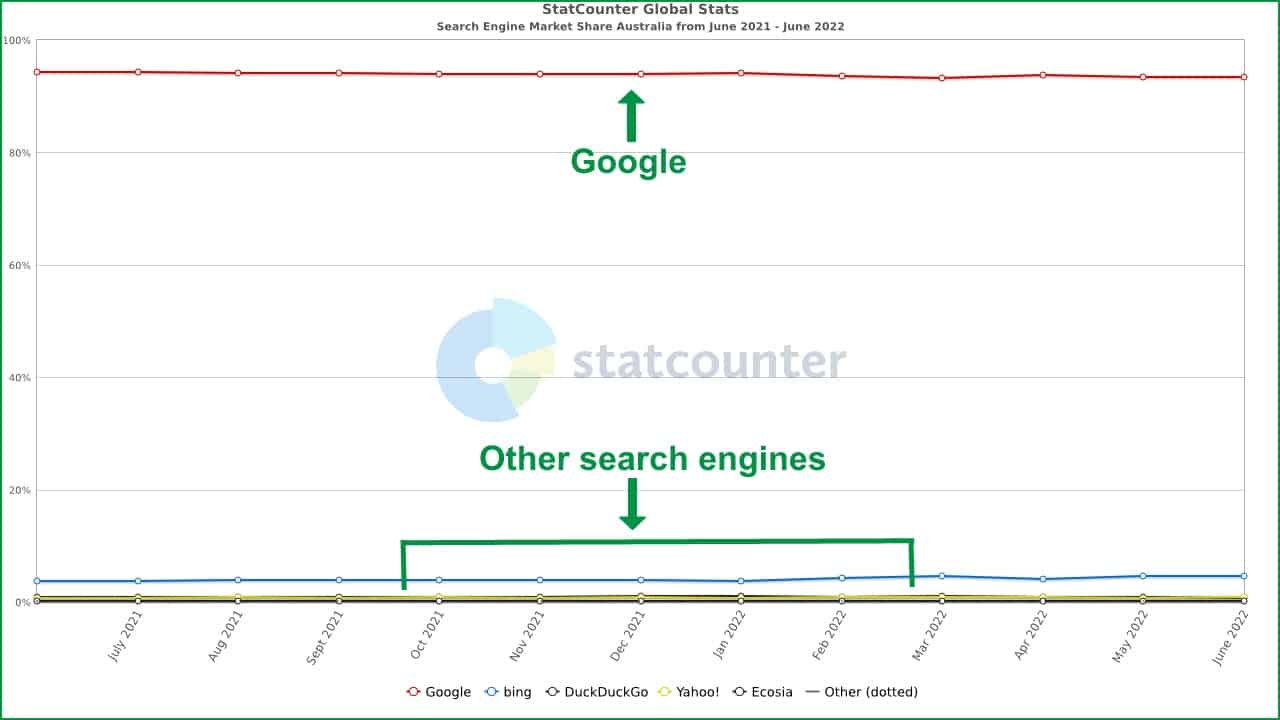
The discipline of SEO divides into two main areas:
On page SEO
The goal here is to publish content on your website which Google will assess as
- Relevant to specific searches
- Useful and helpful for searchers
- Fresh and up to date
Google assesses each page individually, as well as looking at the site as a whole. So the more pages you have on your site, the more opportunities you have to optimise for different searches. This is why a blog is so useful to SEO. (A blog is equally useful for content marketing, of course!)
Off page SEO
There’s also a great deal of SEO work which happens away from your own website – off-page SEO. A major goal here is to ‘prove’ that your content is valuable by getting other sites to link to your page. Each link is like a recommendation – the more you have, and the greater the authority of the sites linking to yours, the more likely your content is to be valuable.
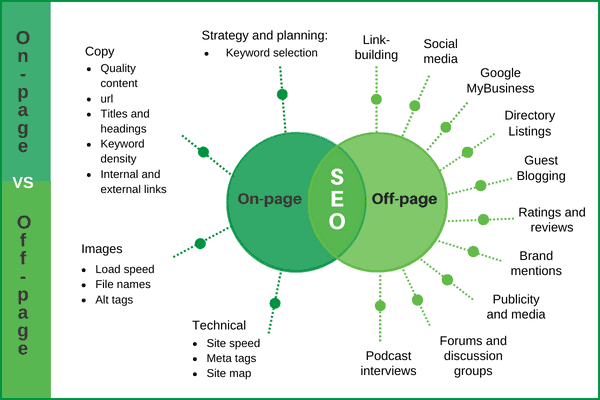
When you consider content marketing vs SEO, there are two key differences beyond the purpose:
- SEO is purely online. It’s all about the search engines, which ignore your brochures, books or even historic sites. (They will notice the pages you publish about them online, though.)
- The off-page SEO work of generating links to your site is not part of content marketing.
Public Relations
 Let’s look at the third of these marketing disciplines – public relations.
Let’s look at the third of these marketing disciplines – public relations.
The primary purpose of PR is to build brand awareness and reputation. It’s often difficult to tie specific sales to PR campaigns, and results are measured by KPIs such as advertising value equivalent (AVE), number of mentions; how big an audience is reached, and positive sentiment.
The best-known element of PR is publicity – press releases sent to journalists in the hope of getting stories into the news. Nowadays these are often also shared with online press release sites, generating at least one link back to your website, so there’s overlap with SEO.
Publicity stories may be featured online or offline, which is one way in which PR is closer to content marketing than SEO. Other offline activities can include events, or meetings with targeted groups such as relevant governments.
Publicity also overlaps with social media, especially when it comes to interacting with customers. Fast and helpful response to complaints can make a huge difference to a company’s reputation. If there’s a bad news story, how you respond to social media feedback is just as important as how you deal with journalists.
The overlap between Content Marketing, SEO and PR
It should be clear by now how much these three marketing disciplines overlap. You can see that some parts of ‘marketing’ are relevant to two or even all three of them.
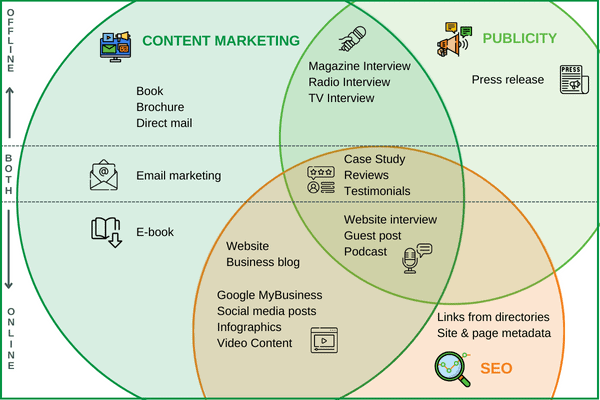
Consider your business website:
- Everything on the website is a part of your content marketing. It’s all your content. Every page should be serving a customer or potential customer in some way.
- Every page should be optimised for SEO.
- Much of your PR and publicity is likely to drive visitors to your website. You need the content and stories to support your brand and reputation.
Remember, however, that each discipline has a different purpose, and these apply to different parts of the buyer journey. This diagram sums it up:
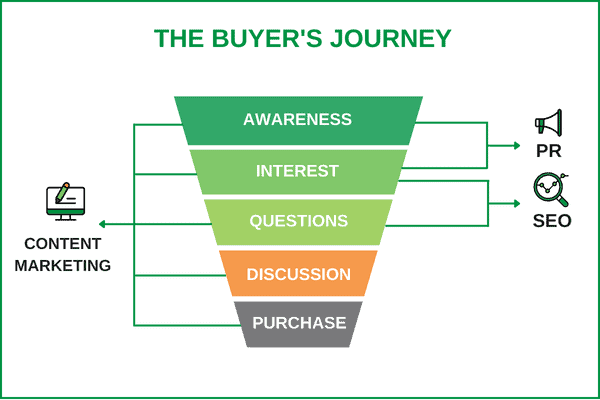
Content marketing vs SEO vs PR – where should you start?
As a business owner, you’ll meet people and companies trying to sell you all these services. Where should you start?
It’s simple:
Start with the story
You can create content which doesn’t have a story, but it’s hard. And pointless. There should always be a story somewhere which points to you and your business as the good guys. If you post an infographic, the underlying story is that you’re interested and expert in that topic area. If you post a comparison of your features to a competitor, the story you’re highlighting is how you’re better in some way.
You can do some SEO without a story. Links from online business directories to your site are one example. But most SEO requires a story. A topic. A keyword. A theme. Some quality content which means visitors spend some time on the page once they get there.
It is possible, if you’re in a small market without many competitors, to do well in SEO without stories. Where there’s not much competition, it’s easier to stand out But usually, you’ll find you need a blog, or resources or tools for your potential customers.
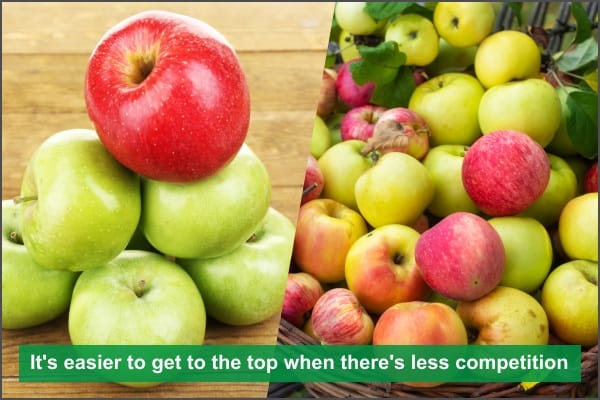
As an aside here, we scored great SEO results for one client in a local area with this blog. However, if they’d wanted to rank for ‘conveyancing sydney’ rather than ‘conveyancing castle hill’, it would have taken more than a handful of blogs.
You cannot get publicity, which is central to PR, without a story. If there’s no story in your press release, journalists will simply ignore it. (A lot of them will ignore it anyway, but that’s just how it works.)
In short, whichever marketing approach you take, you’re going to need content and stories.
Consider your level of control
If you choose a content marketing strategy, you have complete control over what you publish on your site. You have limited control over who links to you or publishes you off-site.
If you choose an SEO strategy, you have complete control over your on-page SEO. But off-page SEO and link-building is much harder.
If you choose a public relations strategy, you have very little control over what publicity you’ll get. You really need a hook.
Summing up
I know I’m biased, but I’d recommend starting off with content marketing. After all, whichever option you choose, you’ll need content.
But it shouldn’t be an ‘either-or’ decision.
- Make sure all your online content is optimised for SEO. Not just the words, but the images, urls and meta tags. Any content marketing agency which doesn’t do this isn’t doing good content!
- Look at every story you publish and see whether there’s a hook which might interest journalists. If there is, promote the story. Go one step further with your content strategy and brainstorm something which might interest journalists as well as your target market. Then go out, create, publish and promote!
Everything is integrated these days. Your marketing should be too. So don’t make it ‘content marketing vs SEO vs PR’. Make it ‘content marketing and SEO and PR’.

